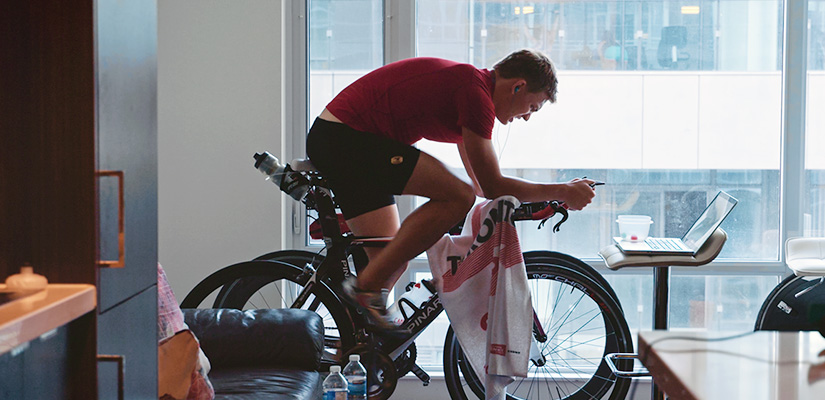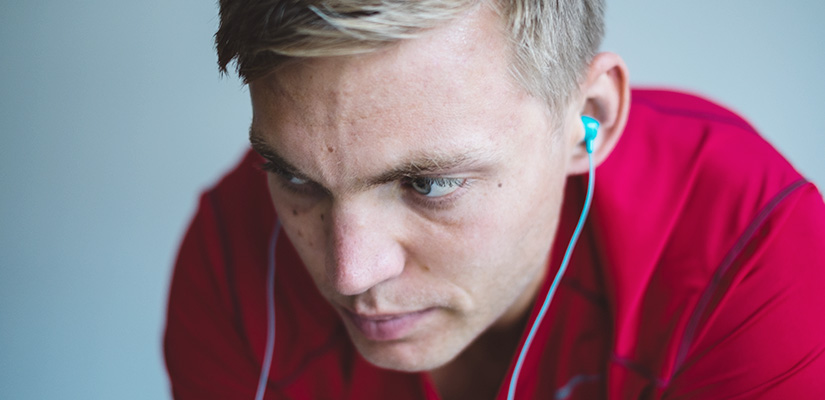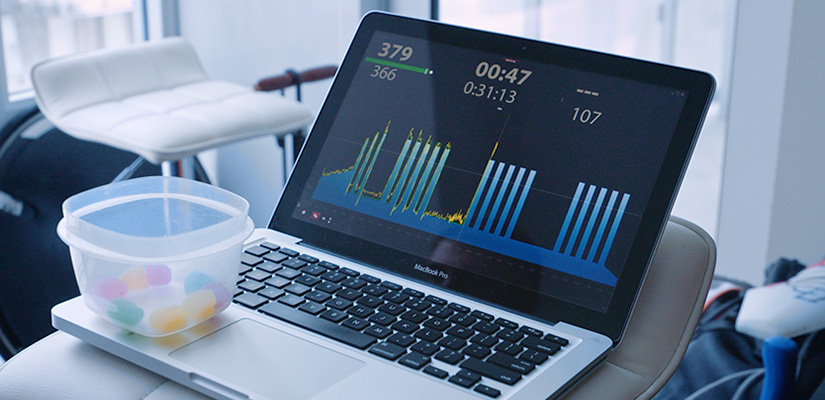9:45:12 Ironman Canada Age Group Win With TrainerRoad
Once a novice to endurance sports, Daniel Clarke worked hard and trained smart. The culmination of all his efforts paid off this past July when he won his age group at Ironman Canada.
For a guy who had a humble start to his triathlon career — he finished second to last overall in his first triathlon in 2012 — we knew we had to learn his story leading up to the winner’s podium.
How Daniel Clarke Won His Age Group at Ironman Canada
Making the transition from below-average triathlete to highly competitive amateur athlete isn’t easy — a tactical training approach is key. This is one glaring lesson you’ll learn as you read Daniel’s story.
For many athletes, it takes years of trial and error to find a solid training formula. For Daniel, it was no different. To get insight into what he’s learned over three years of triathlon training, we interviewed him in Canada. This is what he told us.
Preparation
There are a lot of athletes who hire a coach to help them prepare for their triathlon event. Daniel’s isn’t one of them; he’s always been self-coached. At the beginning of his training career, this put him at a disadvantage.
Self-coaching alone does not put an athlete at a disadvantage. But, self-coaching without proper training knowledge and a structured training plan does.
To prepare for his first triathlon in 2012, Daniel’s training was minimal and scattered. He’d lift weights at the gym, run a few times a week and do a 20-kilometer bike ride around his neighborhood when he could fit it in. And for swimming, well, he’d be lucky if he got into the pool once a month.
This type of unstructured training is common — but that doesn’t make it effective.
Daniel ended up placing second to last overall in his triathlon race. He later learned there were ten people in his age group who had faster overall times than his bike split. After that, he knew he wanted to get faster. He just didn’t know how. Two years later, in January of 2014, Daniel turned to the the Slowtwitch forum for training advice. This is where he discovered TrainerRoad.
Training
Before Daniel became an Ironman Canada age-group champion, he prepared for another triathlon: Ironman 70.3 Syracuse. The event was at the end of June. From the time he discovered TrainerRoad, he had six months to train for it.
TrainerRoad introduced Daniel to training with power. He didn’t have a power meter at the time, so he used VirtualPower. Before long, he was hooked.
Instead of just going off of perceived effort, he used VirtualPower to know when he was working and when he wasn’t. This prevented him from being able to cheat his workouts.
Daniel’s half Ironman performance was decent at 4:45:25, but he went home without a medal. For Ironman Canada in July of 2015, he wanted to change that. At that point, he’d already made the switch to training primarily indoors. All he needed now was more structure.

To win his age group at Ironman Canada, Daniel used TrainerRoad’s Sweet Spot Base, Sustained Power Build and Full Distance Triathlon training plans.
In the beginning, he had some doubt whether these plans would work. Here’s what he told us:
“Early on, I was a little bit skeptical. I seemed to be spending a lot of time doing lower power. I knew I really needed to get my FTP up to be able to ride like I wanted to ride, then be able to run after that ride. But I trusted the plans and they did work out for me.”
As Chad Timmerman, the Level I USA Cycling coach who designs all of TrainerRoad’s training plans would say, “You can skip the Base Phase — but only at your own expense.” If you bypass establishing a foundation of fitness, you can’t expect to gain much from your training.
Going through the full evolution of a structured training plan, including the Base, Build and Speciality Phases, prepared more than Daniel’s body for race day. It helped prepare his mind, too.
Discipline
Everyone has the potential to run really well off the bike. But a lot of people, whether it’s because of excitement or the crowds, end up pushing beyond themselves and overdoing it on the bike. Daniel doesn’t have this issue. It’s one of the major reasons he’s had success.
Understanding his limits on the bike not only improved his bike splits, but his run too. After improving his cycling training, during Ironman Canada Daniel was able to get off the bike near the front. And because his legs weren’t gassed, he could run his way through the field. This is where he dropped much of his competition.
So, how did he teach his body what it feels like to perform at specific outputs? By watching a little dot and line.

During his workouts with TrainerRoad, Daniel told us he was used to trying to keep average power above his goal power. This practice translated to riding outside and taught him to sustain high amounts of power with great consistency.
While on his bike, Daniel spends a lot of time thinking about how he’s feeling. Beyond gaging his body for power, he does constant system checks in the moments he’s not looking up the road or watching his bike computer.
Am I in a good, relaxed position? How are my legs feeling? Is my body holding any sort of tension? Am I’m taking in all the calories and fluid I need?
These questions are all part of his mental system check on the bike. This routine is what kept Daniel in check during Ironman Canada. It’s also what allowed him to outperform his competition.
Nutrition
When Daniel first started riding on the trainer, he’d usually have some kind of snack to keep fueling himself. At the time, he wasn’t eating at specific intervals. Just whenever he felt like eating. This changed when he started training for Ironman Canada and took a more calculated approach to his caloric intake.
While it can’t be credited for his Ironman Canada victory, Daniel’s quirky JuJubes intake strategy illustrates a deep understanding of his body. Something all winners need to have.
Here’s what he does:
“When I trained for Ironman Canada, I was spending a lot of time on the trainer. I found that when I’m doing a really hard workout, I’ll eat a JubJub every four minutes. If it’s an easier workout, I’ll eat one every five minutes. It really helps break up the workout. Also, for longer workouts, having a steady stream of fueling instead of just having a handful of JubJubs after doing a hard interval, I feel works best for me.”
Daniel used the controlled environment and consistency of his trainer workouts to test how his body would react to different nutritional approaches. After each JubJub, he’d check his power, if he was pedaling efficiently and how is body felt. By the time he would get through his systems check, that rest interval would almost up and it’d be time for him to cycle through it all again.
Consuming JubJubes during a training session may seem unorthodox, but it’s what works for Daniel. Whether it’s eating candy or something else, most winners have their own special tricks to help get them through their rides.
Race Day
The weather the day of Ironman Canada was rough. It rained and was colder than anticipated. But that didn’t stop Daniel from having his best performance yet. Take a look at Daniel’s Ironman Canada stats:
- Swim: 01:02:53
- Bike: 05:23:05
- Run: 03:12:02
- Overall Time: 09:45:12
- Placing: 1st AG, 11th OA

Share Your Triathlon Stories and Training Questions
Refined, strategic and disciplined. That’s how Daniel’s training for Ironman Canada can be described.
How do you plan on getting to the winner’s podium? Leave your comments, and if you have them, triathlon training questions below.
Get on the training plan that’s right for you. Try TrainerRoad for one month risk free.

